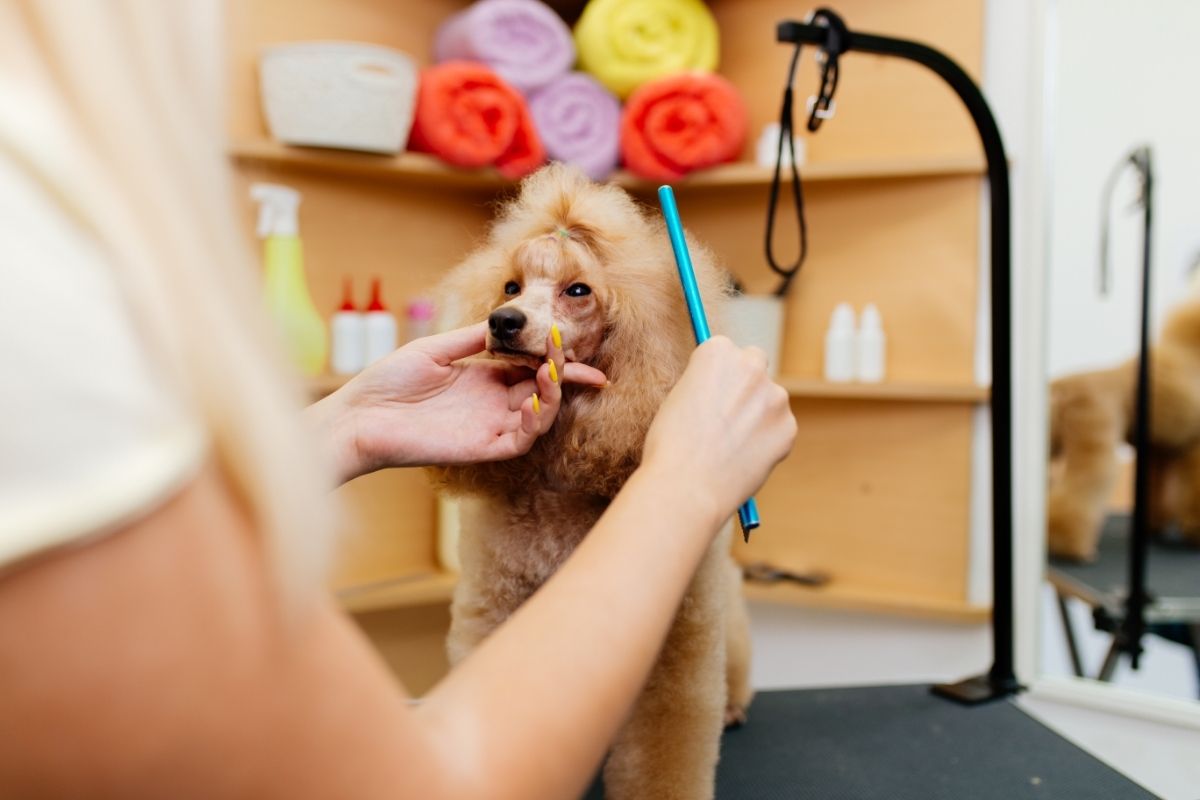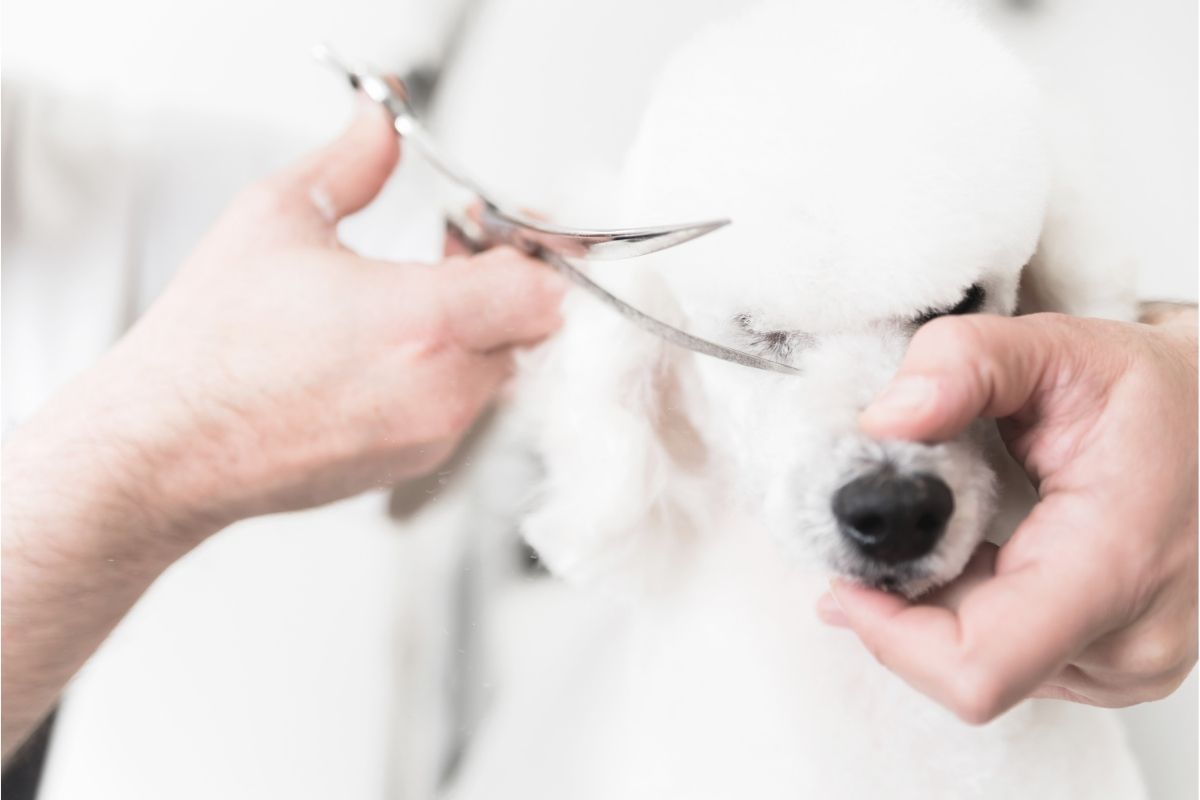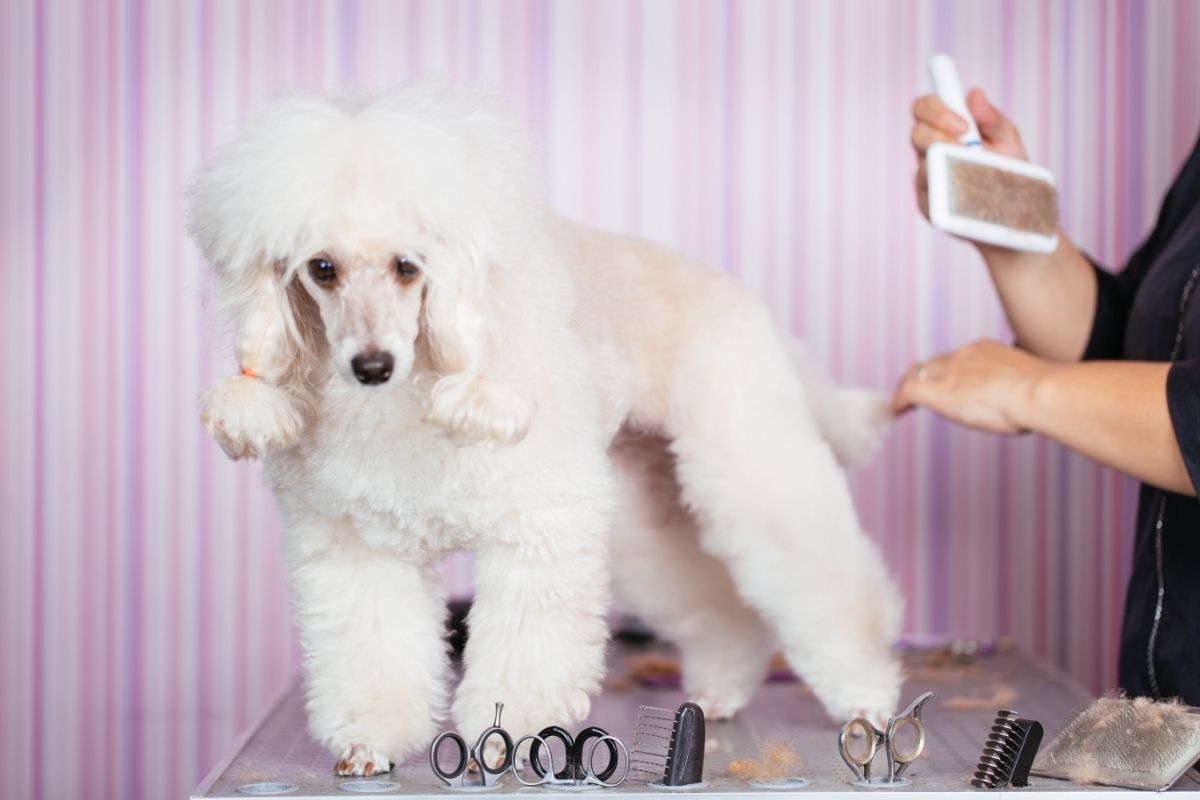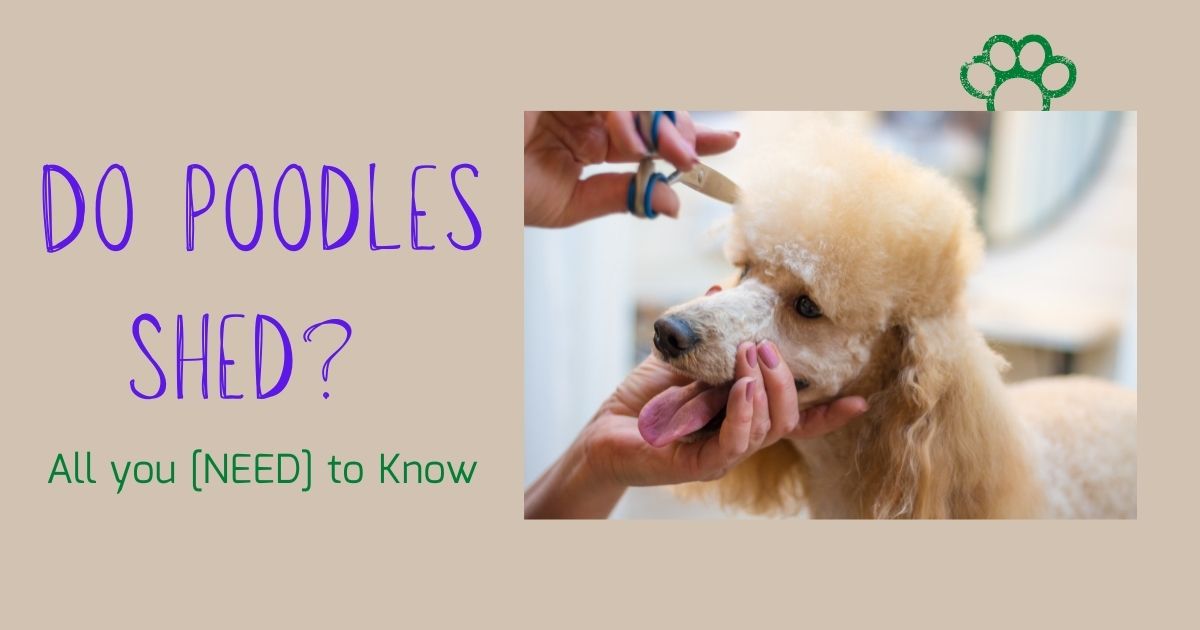Is There a Thing Such as a Small Hypoallergenic Dog?
Poodles come in oodles of shapes and sizes and they are considered a hypoallergenic breed, but many prospective new owners often wonder: do poodles shed? The answer is yes but they shed lightly and produce less dander than other breeds.
There is no breed that is anallergenic, meaning it causes no allergies because all animals, including humans, produce allergens.
Hypoallergenic is a term used to describe a below average or only mildly allergenic breed insinuating that the hair, dander, saliva or other organic materials that are shed cause less allergies.
Do Poodles Shed? What You Need to Know
Poodles are one of the breeds who are classified as dogs that don’t shed a lot because only a small amount of fur and dander is expelled from their coats.
Poodles can be bred as the same type of dog but just in different sizes, namely:
- Standard – considered a medium to large hypoallergenic dogs
- Miniature – considerate small hypoallergenic dogs
- Toy – considered toy breed hypoallergenic dogs
The maltese poodle also don’t shed much and are included on the hypoallergenic dog list.
Poodles shed once every few weeks which is why they are considered hypo breeds when compared to other breeds which shed an average of every three to four days. With the right grooming, a poodle could be a good fit for a person with allergies.

What is the Best Way to Groom Your Poodle?
Poodle shedding is unique as the dander and the hair gets caught within their curls, but this means that poodles have high maintenance grooming needs to keep them hypoallergenic dogs.
Their coats need daily brushing or combing down to the skin to avoid matting.
Home grooming is possible but some research and tools are needed to groom them successfully.
Home grooming kits should include a variety of tools namely:
- Steel combs
- Slicker (or pin) non-shedding brushes
- Good hair cutting scissors
- Electric clippers
A short coat is easy to achieve and maintain, but it can be time-consuming, and if you suffer from allergies – home grooming will aggravate them. It is a lot easier to book your poodle with a professional groomer. Once a month grooming can be regularly scheduled and should suffice to keep up with your poodles’ grooming needs.
Daily brushing will keep your poodle’s coat matt-free, and their skin will stay healthy. In addition, proper coat care will keep a poodle’s shedding under control and decrease allergens like hair and dander in the home environment.
Why do Poodles Shed Less Than Other Dogs?
There are two main reasons why poodles don’t shed a lot:
Growth Cycle Length
Compared to other breeds, poodles have a longer hair growth cycle. The growth cycle has three phases which include new growth phase (anagen), the resting phase (catagen), and the falling out phase (telogen). Poodles have a long growth phase which means the cycle takes longer and therefore sheds less.
Coat Conformation
The conformation of the poodle’s coat also adds to the decreased in shedding due to two factors:
Single coated
Most breeds are double-coated dogs which means they shed seasonally and have more fur. However, poodles are considered dogs that have hair, not fur, and they only have a single layer of hair that sheds less than fur would.
Acts as a hair and dander trap
The curls in a poodle’s coat and the dense and wiry conformation of the hairs tend to trap any old dander and shed hair within the coat, which is removed with brushing instead of randomly dropping all over the house.

Why Do Dogs Shed?
Shedding occurs when hair reaches the end of its growth cycle and falls out naturally so that new hair can take its place. During seasonal changes, dogs with thick double coats shed significantly more than single-coated breeds, especially their undercoats.
The term for heavy seasonal shedding is “blowing the coat,” but luckily, poodles do not undergo any shedding when the weather changes.
Shedding should not be confused with hair loss that results in bald patches. Some common causes of hair loss in dogs can be due to:
- Skin infections
- Parasite infections
- Inflammatory disease
- Hormonal imbalances
- Nutritional deficiencies
Rarer causes can include genetic diseases or inherited disorders, so always be sure to use responsible breeders.
What Should I do if my Poodle is Shedding?
Increased hair loss or shedding could be due to several factors, including stress or a potential underlying problem. A slight increase in hair loss is not concerning, but if excessive amounts of hair are noticeably falling out or adhering to furniture or bedding, then it would be best to consult your veterinarian.
If your poodle is shedding a lot, try to take note of a few things before you go to your vet so that you can provide an adequate history to help determine the root of the problem. Collect information about external parasite control, current diet, previous skin conditions, family history from the breeder, and your pet’s general health over the past few weeks.
If someone else is taking your pet to the vet for you, contact your vet beforehand or send a detailed email or letter to the practice with your pet so that a good history can be collected.
Why is my Poodle Shedding?
If your poodle is losing more hair than usual and there are noticeable bald patches, there may be an underlying health issue that needs to be addressed by your veterinarian. The key to determining if there is an underlying condition is a good history, a complete clinical exam, and some lab tests to try and get to a diagnosis.
Listed below are a few common causes of hair loss in poodles:
Alopecia
This hereditary disorder can mostly be seen in miniature and toy poodles. Hair loss occurs on both sides of the body and can also include the base of the tail and up the spine. Alopecia does not affect the head or the forelimbs.
Alopecia is not accompanied by any other symptoms, so your pet’s coat and general health remain unaffected.
Genetic Disorders
Cushing’s disease
Poodles of all sizes are predisposed genetically to Cushing’s disease. Cushing’s can affect skin health and compromise the skin barrier. Therefore, it is essential to monitor your pet closely if they have recurring bouts of skin infections or a poor coat condition, as it could mean there is an underlying issue that has not yet been diagnosed.
Remember to mention signs to your vet that are out of the ordinary like increased water intake, increased urination, chronic scratching, distended abdomen, and hair loss.
Treatment for Cushing’s may need a combination of chronic medication and possibly surgery depending on the origin of the hyperadrenocorticism.
Sebaceous Adenitis
This disorder often occurs in standard poodles, but other sizes are also at risk. The sebaceous glands produce natural oils for the skin to help keep it healthy, but with sebaceous adenitis, the glands become inflamed and cause skin irritation, hair loss, and decreased hair growth rates.
The symptoms vary greatly, making it a complex condition to diagnose as many other health problems present with the same symptoms. Some symptoms can include dandruff or increased dry, scaly skin, abnormal odors, and recurrent skin infections. Unfortunately, it is still difficult to test for genetic disease with DNA samples from breeding poodles.
The condition is diagnosed via a skin biopsy, and it is vital that people breed responsibly and not use affected adults.
Will I be Allergic to my Poodle Shedding?
Allergies are difficult to adjust your lifestyle too, but many people are willing to make sacrifices to enjoy the wonderful world of pets. Unfortunately, shedding is potentially only one reason you may be allergic to a pet; dander and saliva can cause allergies too.
Poodles are considered hypoallergenic, but allergens in saliva and dander can still result in allergic reactions. Although poodles do not shed as much and do not drool as much as other dogs, the allergen load will be less and possibly easier to manage. However, it will not be zero, so the potential for allergies is still a factor to consider before getting a poodle.
Before committing to adding a poodle to the family, do some research and spend some time with various types of poodles before making a lifelong commitment that may affect your quality of life due to allergic reactions. A dog is a big responsibility, and it is important that owners take the time to consider a pet carefully.

FAQs on Poodle Shedding
Are poodles completely “non-shedding?”
Poodles do shed, but only a tiny amount. Of course, all dogs and even humans shed hair, but due to the poodle’s coat conformation, the shedding gets trapped and causes less environmental contamination with hair and dander.
Do poodle crossbreeds molt?
Poodle crossbreeds may shed less depending on the genes inherited, making them more hypoallergenic, but the mixed breeds still shed more than a purebred poodle.
What other dogs don’t shed?
Several breeds are considered hypoallergenic because they shed less and some of them include the Portuguese Water Dog, Bichon Frise, Italian Greyhound, and the Basenji.
Is it hard to groom a Poodle?
Grooming a poodle is not difficult if it is done regularly and the right equipment is used. Professional groomers are the easiest option, and regular visits will keep your pet looking and feeling great.
However, if you prefer to groom your poodle at home, the easiest option is to keep it short and shave it every two to three months, brush their coats regularly and bath them with a good dog shampoo.
